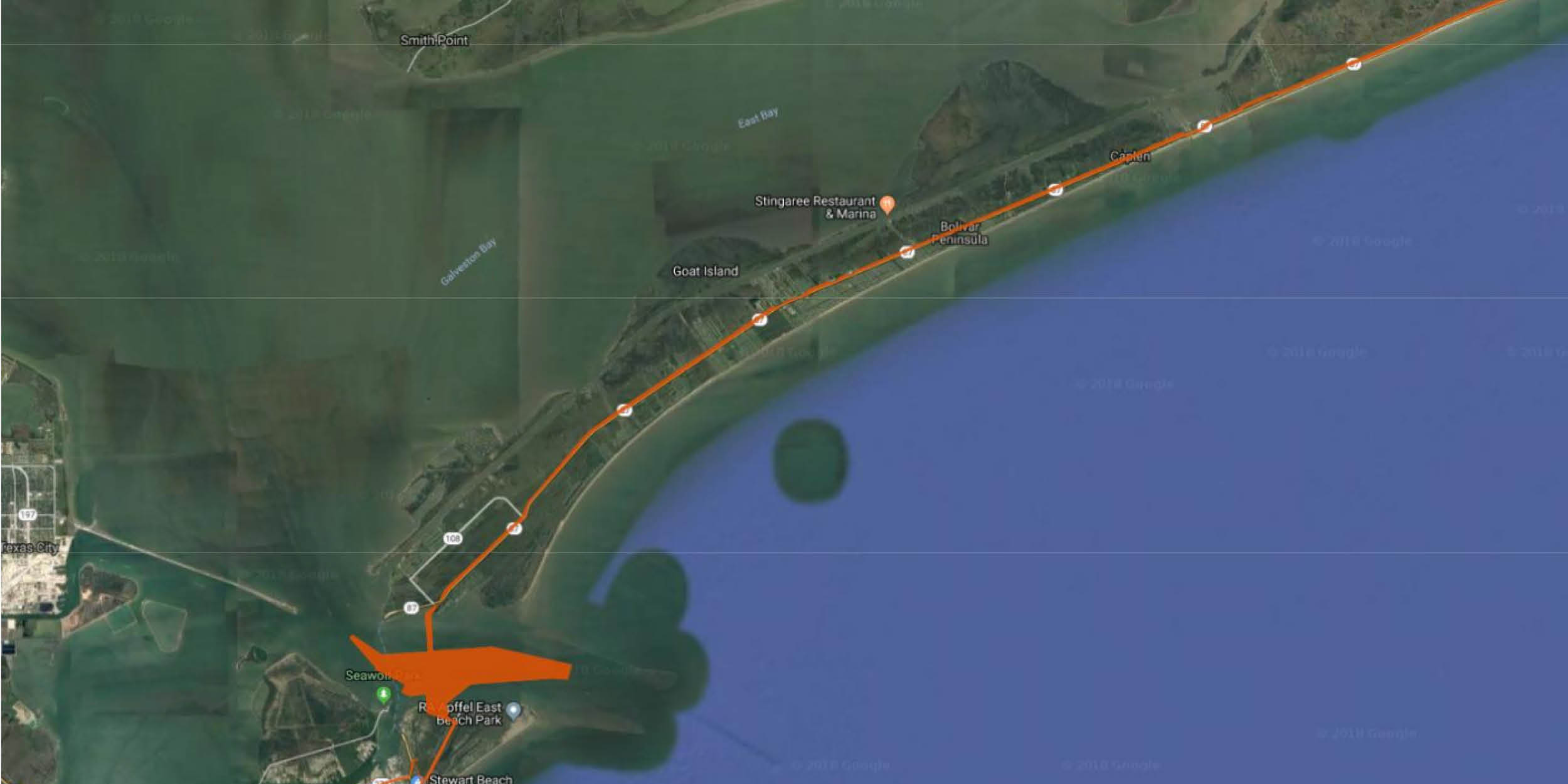Turtle Island Restoration Network is among several groups that support the position that the Army Corps’ coastal spine comment plan is unacceptable. In the below editorial, recently published in The Daily News, our Gulf Program Coordinator Theresa Morris expresses why it’s wrong the corps is asking the public to make comments on a $30 billion dollar project that is 10 percent complete and will not allow the public to comment once they have completed their study.
Kelly Burks-Copes, project director for the U.S. Army Corps of Engineers Coastal Texas Protection and Feasibility Study, was quoted in an article (“Groups say maps show corps’ true plans for Ike Dike,” The Daily News, Dec. 4) stating that the Army Corps is “only at 10 percent design at this point.”
If the corps is so uncertain of the placement of the coastal barrier alternative, how can they properly evaluate the impacts to the environment or to the people who make their home on the upper Texas coast?
She was also quoted as stating that the next two months are the only time in the development of that final study during which people will be able to submit their comments on the proposal. The corps is asking the public to make comments on a $30 billion dollar project that is 10 percent complete and will not allow the public to comment once they have completed their study.
This doesn’t demonstrate transparency or an appropriate level of concern for the public’s input.
There’s no location on Galveston or Bolivar for this barrier wall that would avoid negative impacts; every home beachside of the barrier would be at risk for induced flooding, thousands of homes are at risk for eminent domain, and even homes behind the barrier would be at risk of backside wind-driven flooding.
Burks-Copes additionally commented that “(the barrier) could very well move to the front of the island.” Does this mean a wall on the beach? What about Texas law requiring public beach access? Would we now have potential weak points along this T-wall to allow for beach access? Where would they find sand for the 5,000 acres of beach renourishment in front of the barrier to ensure we have a beach? How often would it need to be renourished? What kind of long-term maintenance costs would be incurred, and will this be a burden on taxpayers?
In terms of environmental impacts, such hardened structures like walls or gates will inevitably impact the ecosystem function surrounding Galveston Bay. Estimates for flow constriction (28 to 39 percent) through the gates will result in a decrease of tidal range and sediment transport, alterations in water salinity, and increased erosion in wetlands and beach front areas. This limits the amount of habitat available to coastal wildlife such as nesting birds and sea turtles, poses a threat on the migratory stages of aquatic species such as shrimp, fish, and dolphins, and reduces viability of our oyster reefs. These ecosystem malfunctions caused by such an extensive hardened structure will also certainly have a negative impact on our local economy through a loss in beach tourism, nature tourism, recreational fishing and commercial fisheries.
At the community meeting in Galveston, the information presented was obtained through the Freedom of Information Act and showed the only location of the barrier as described in the Coastal Texas Protection and Feasibility Study. Residents of Texas deserve the opportunity to comment based on the final placement of the structure and not on “a line that is very conceptual.”
Throughout the study process, public comments are critical to understand the needs and opportunities along the Texas coast. Turtle Island Restoration Network is co-hosting multiple Ike Dike Public Hearings in December. Please join us to review the plans and participate in a series of public meetings. Your input will help create an implementable Coastal Texas Study for Congressional authorization.




